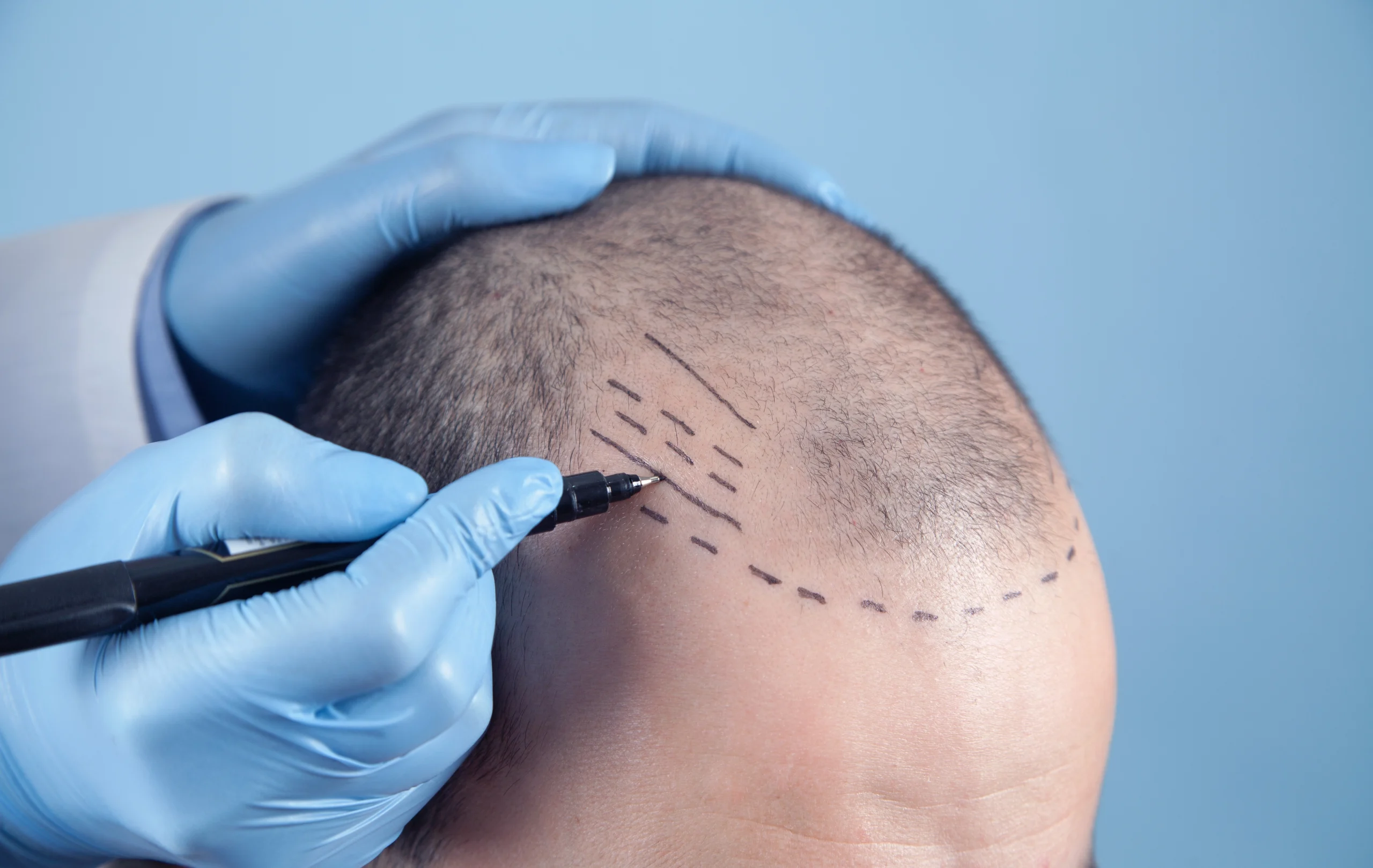
DHI, or Direct Hair Implantation, is a modern hair restoration technique that allows hair follicles to be extracted and implanted directly into the recipient area without the need for prior channel creation. Using a specialized tool called the Choi implanter pen, the surgeon performs both channel opening and graft placement in one step, resulting in a minimally invasive, highly precise, and natural-looking outcome.
DHI is considered one of the most advanced forms of FUE, offering significant control over angle, direction, and depth during implantation.
The DHI process involves three key stages:
Healthy follicles are harvested individually from the donor area (typically the back or sides of the scalp) using micro punches, like FUE.
Extracted follicles are kept in a protective solution to maintain vitality and increase survival rates.
Each follicle is loaded into a Choi implanter pen and implanted directly into the scalp. The surgeon controls the depth, angle, and direction of each graft in real time. This one-step process enhances precision and density while reducing trauma to the skin.
DHI is recommended for individuals who:
Both men and women can benefit from DHI, and it is especially popular among professionals who want discreet results without shaving the entire head.
Patients typically return to light activities within two to three days. The scabbing is minimal, and the donor and recipient areas heal faster compared to conventional FUE. Transplanted hairs shed within the first month, followed by new growth beginning around month three or four. Full results are generally achieved between ten- and twelve-months post-surgery.
Post-operative instructions include scalp hygiene, activity restrictions, and follow-up appointments to monitor progress.
One
Local anesthesia
Immediately
7 days
None
* For informational purposes only, be sure to consult your doctor for diagnosis and treatment.
In FUE, channels are opened before graft implantation. In DHI, the implanter pen allows simultaneous channel creation and implantation, reducing skin trauma and improving precision.
Each has its advantages. DHI offers more control over placement and is ideal for areas requiring dense packing. FUE may be more suitable for covering large bald areas in a single session. Your doctor will recommend the most appropriate method.
No. The procedure is done under local anesthesia, and most patients report minimal discomfort.
Yes. Most patients resume non-strenuous work within two to three days. There is typically less swelling and fewer visible signs compared to other methods.
Not necessarily. DHI is well-suited for unshaved or partially shaved procedures, particularly useful for female patients or those seeking a discreet experience.
Yes. Transplanted hairs are taken from areas genetically resistant to hair loss and are expected to last a lifetime.
Due to the delicate implantation process, DHI sessions typically allow for fewer grafts per day than FUE. For large areas, multiple sessions may be recommended.
Absolutely. The precision of the Choi pen makes it ideal for beard, mustache, and eyebrow transplants

Medipol University Hospital, being the justifiably proud of Medipol Education and Health Group in Turkey and in the world, resulting in this spirit, is a health complex having JCI standards accepting patients from all over the world.
TEM Avrupa otoyolu göztepe çıkışı no:1, 34214 Bağcılar/İstanbul